Connecting to the future : Rice-paddy Methane Reduction Project Goes into Full Swing More Growth Anticipated in Regionally Supportive, Eco-conscious Agriculture
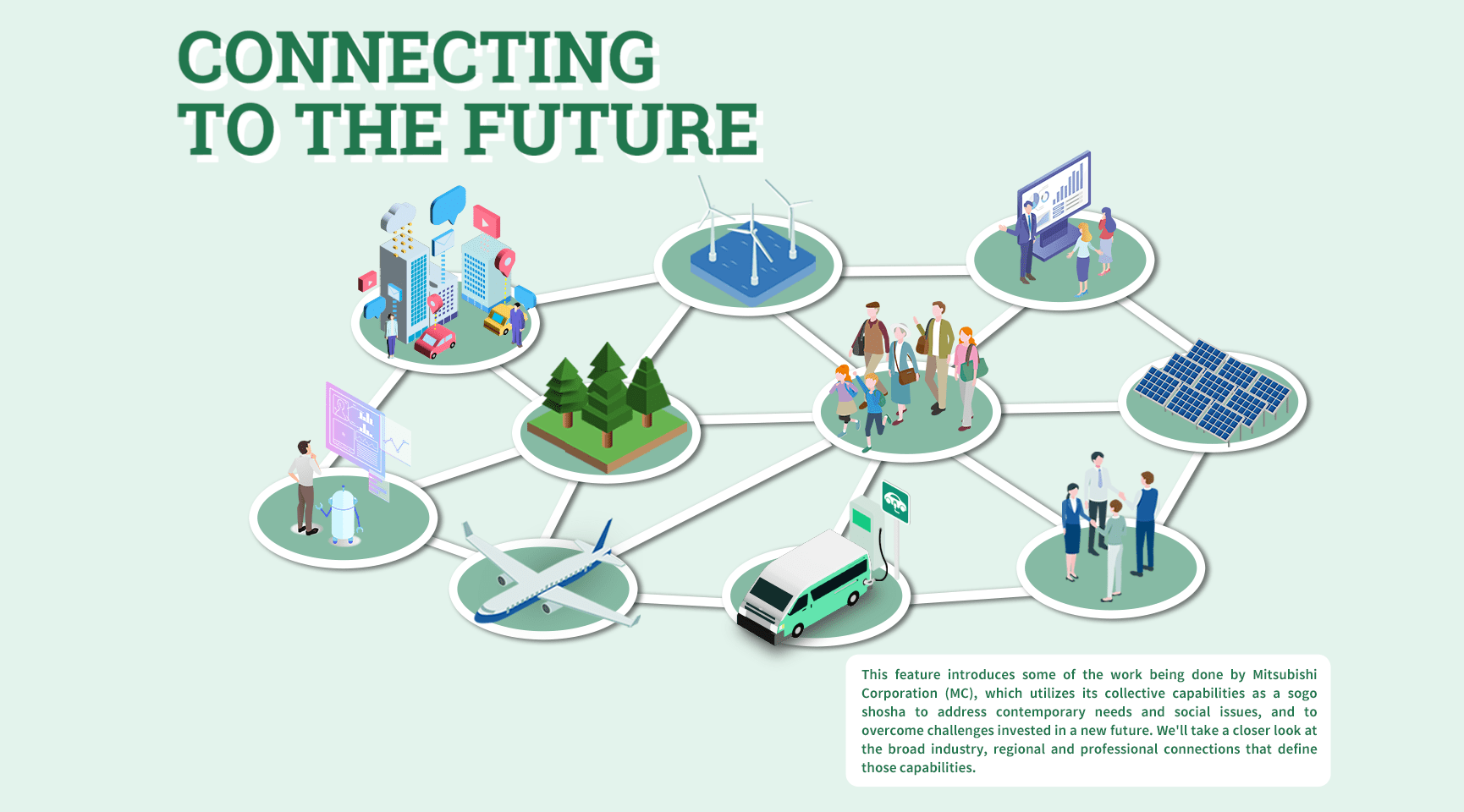
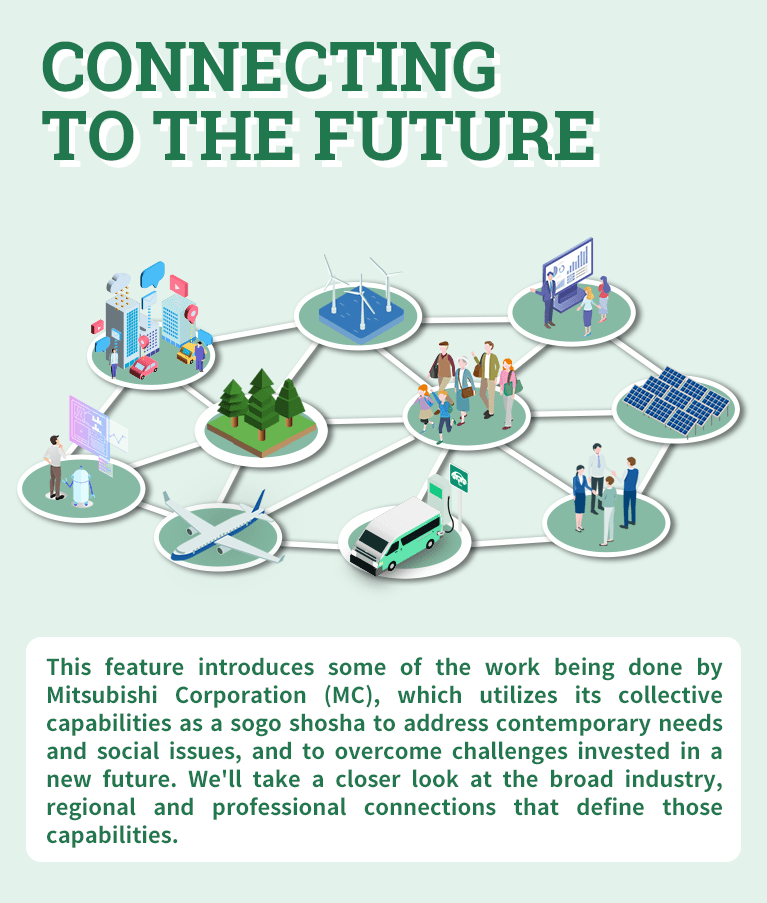
Teaming with Farmers to Decarbonize vol.3
Rice-paddy Methane Reduction Project Goes into Full Swing
More Growth Anticipated in Regionally Supportive, Eco-conscious Agriculture
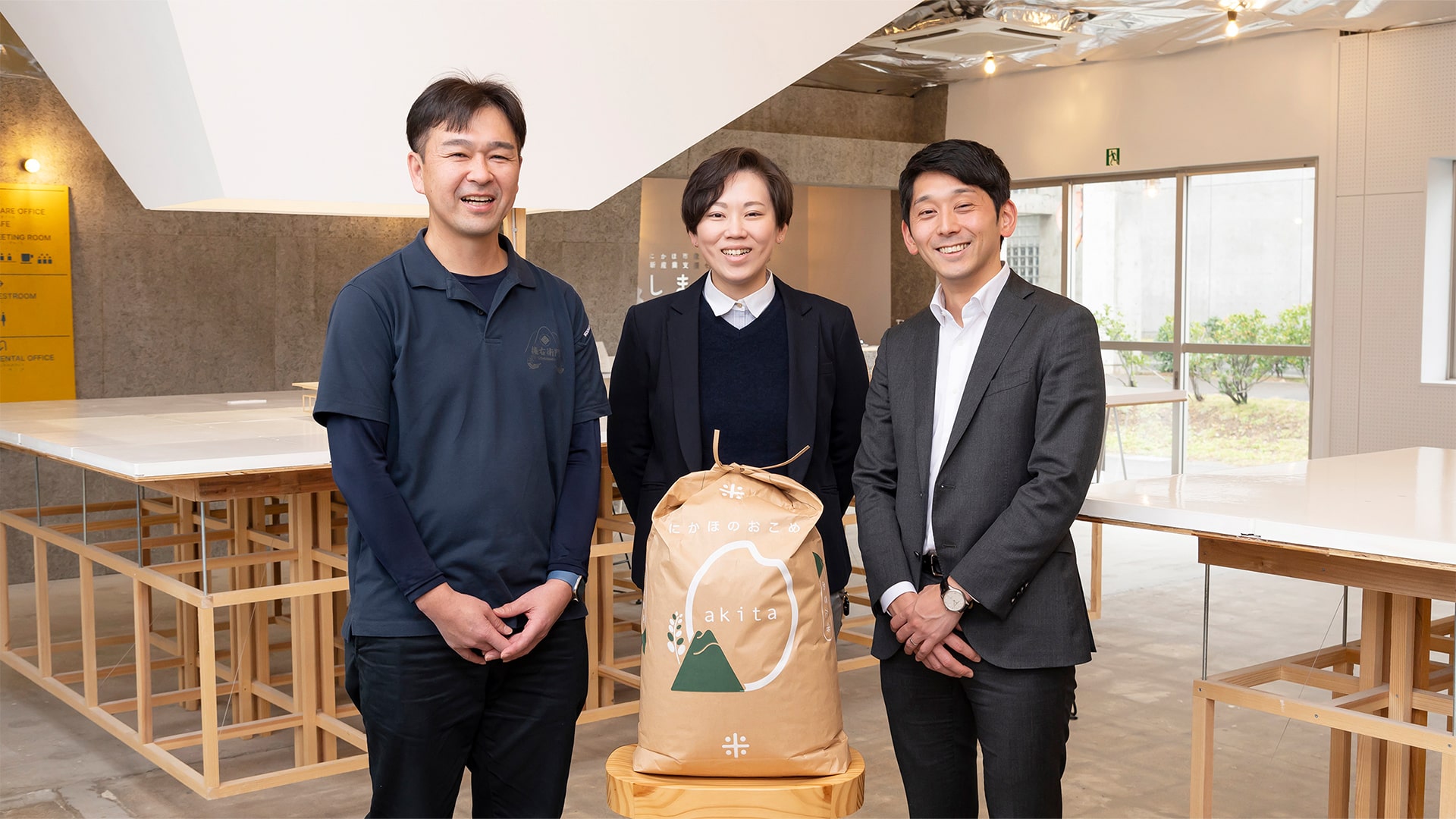
In Japan, efforts are underway to grow the highest quality of rice possible using methods that help our goal to decarbonize by reducing rice-paddy methane emissions. In Akita Prefecture's Nikaho City, a farming company called Gonuemon has been delving into new agricultural business through its participation in MC's rice-paddy methane emissions reduction project, which got underway in fiscal year 2023. In Part 3 of our series covering MC's collaborations with farmers, GLOBE+ Editor in Chief Kazuhiro Sekine sits down with Gonuemon's Representative Director Takashi Suda and two MC employees to discuss what prompted the farming company to join the project and its reactions thus far, and get some perspectives on agriculture and the region.
- Discussion Participants
-
Takashi Suda (Representative Director, Gonuemon Co., Ltd.)
Shunya Hiroshima (Business Incubation Unit, Food Industry Group CEO Office)
Minami Yamashita (Strategy Planning Team, Agricultural Produce & Dairy Products Dept., Farm, Dairy & Meat Produce Div.)
- Interviewer
- Kazuhiro Sekine (GLOBE+ Editor in Chief)
You Can Go Home Again
A Farmer's Return to Nikaho City
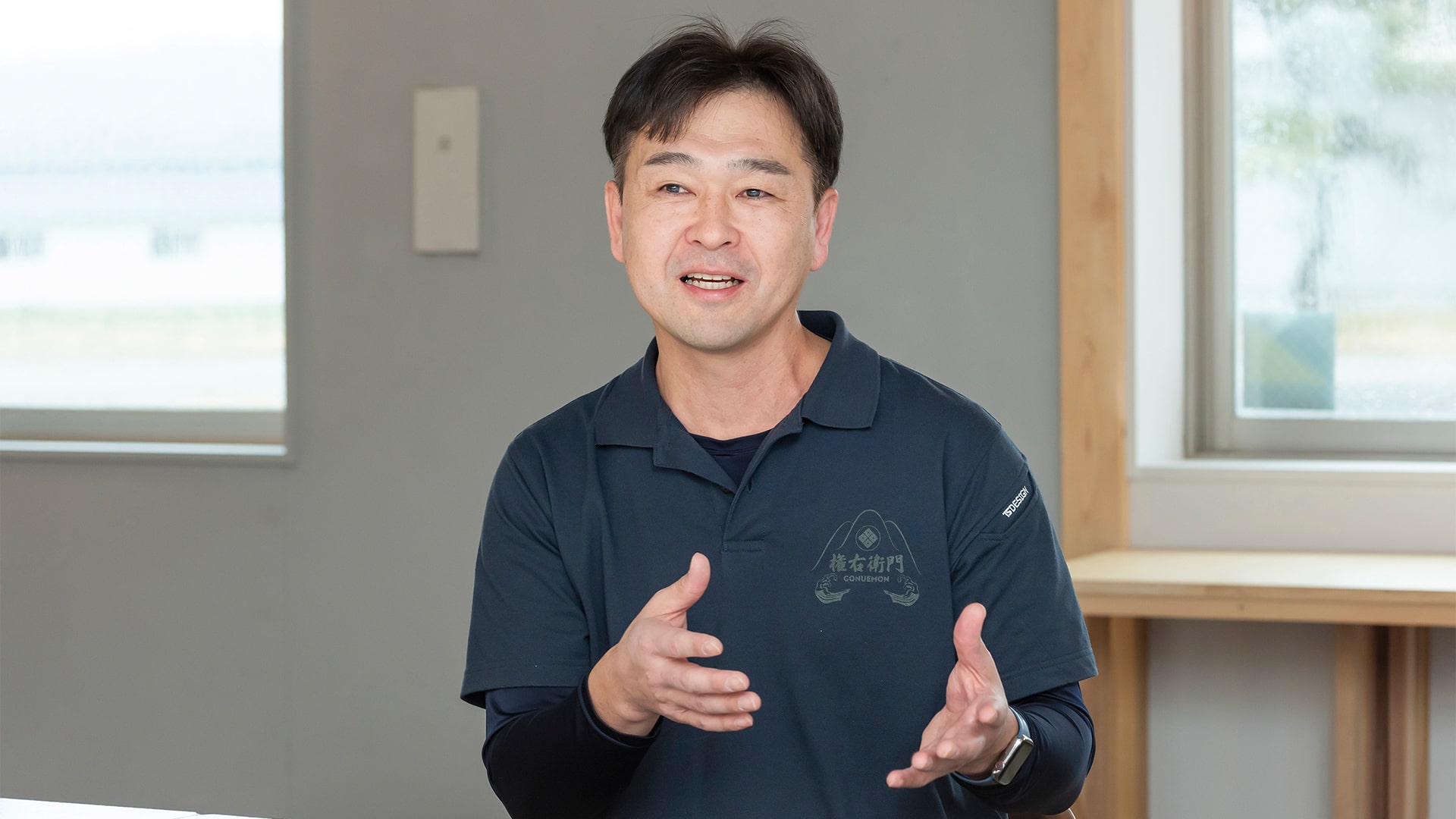
—— Today we're joined by Mr. Takashi Suda, Representative Director of Gonuemon, an Akita-based agricultural corporation and participant in MC's project to reduce methane emissions from rice paddies. Welcome Mr. Suda.
Suda Thank you. I'm pleased to be here. I come from a family that has farmed in Nikaho City for more than 400 years. When I was a child, my father told me that I'd inherit the farm from him one day, but I hated the idea, so when I graduated from high school I ran off to find a job in Tokyo. I remember thinking to myself, "I'll never go back to that hicksville again!" (laughs) I worked at a company in Tokyo for three years, but little by little I began wondering what was going to happen to my family's farm, and pangs of nostalgia starting pulling my heart back to Nikaho. It was around that time when food-control-system deregulations made it possible for farmers to start selling their own rice. My father contacted me again and asked if I'd come back and help him, so I returned to Nikaho and began my career in agriculture. I was 25 years old. In March 1998, my father and two other farmers teamed up to establish a rice sales company called Naruhodosya, and in 2021, our family farm was formally incorporated as Gonuemon Co., Ltd. In addition to growing our own crops like rice and green onions, we are also contracted by other businesses to do agricultural work and even offer a farming related consulting service. In recent years, more farmers in Nikaho City have been approaching us to take over their farms, saying that they've gotten too old to continue the work themselves. As a result, Gonuemon's farmlands under management have been gradually growing in size.
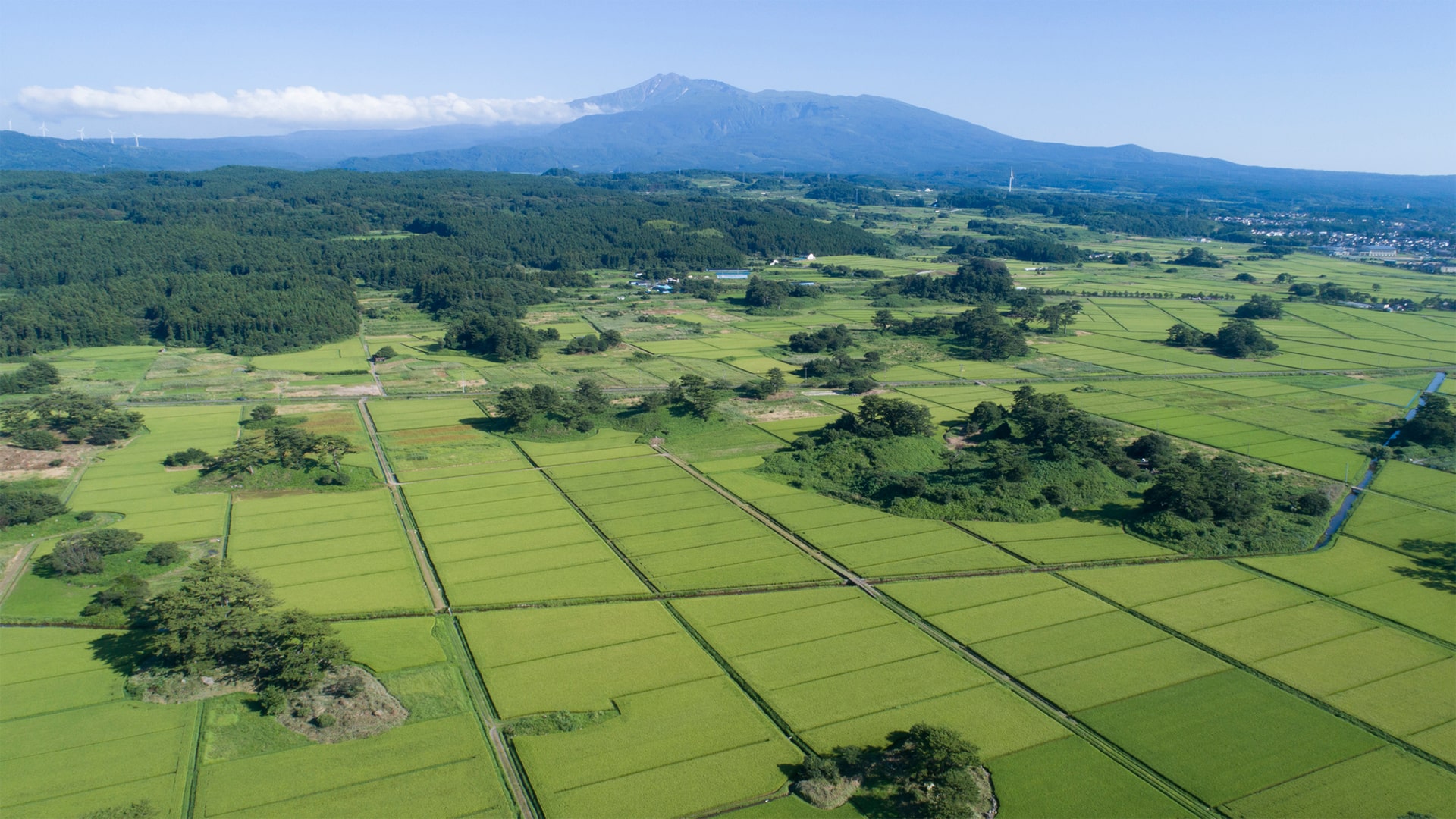
—— In our last article, we talked about methane emissions from rice paddies. Has Gonuemon also been aware of this problem?
Suda Yes, of course. We've always known that methane is produced during the summertime, and that it harms the roots and can even adversely impact rice yields. For quite some time, we'd been trying to figure out how to maintain healthy and high-quality production, and we realized how important it is to curb the paddies' methane emissions. For more than ten years, I've been softly tilling the soil and planting the rice straw after the autumn harvests. Methane from the paddies is produced when the rice straw and other organic material is broken down by the water. The post-autumn tilling allows the rice straw to decompose in the soil over the winter, which helps to lower the methane emissions when the fields are flooded by water later in the season. Just tilling before the spring planting will save farmers work, but Gonuemon tills in both the spring and autumn, because we feel it gives us the best chance of minimizing methane and producing high-quality rice. Environmental awareness really varies from one farm to another, but we're one of the few in our area that tills right after the autumn harvest.
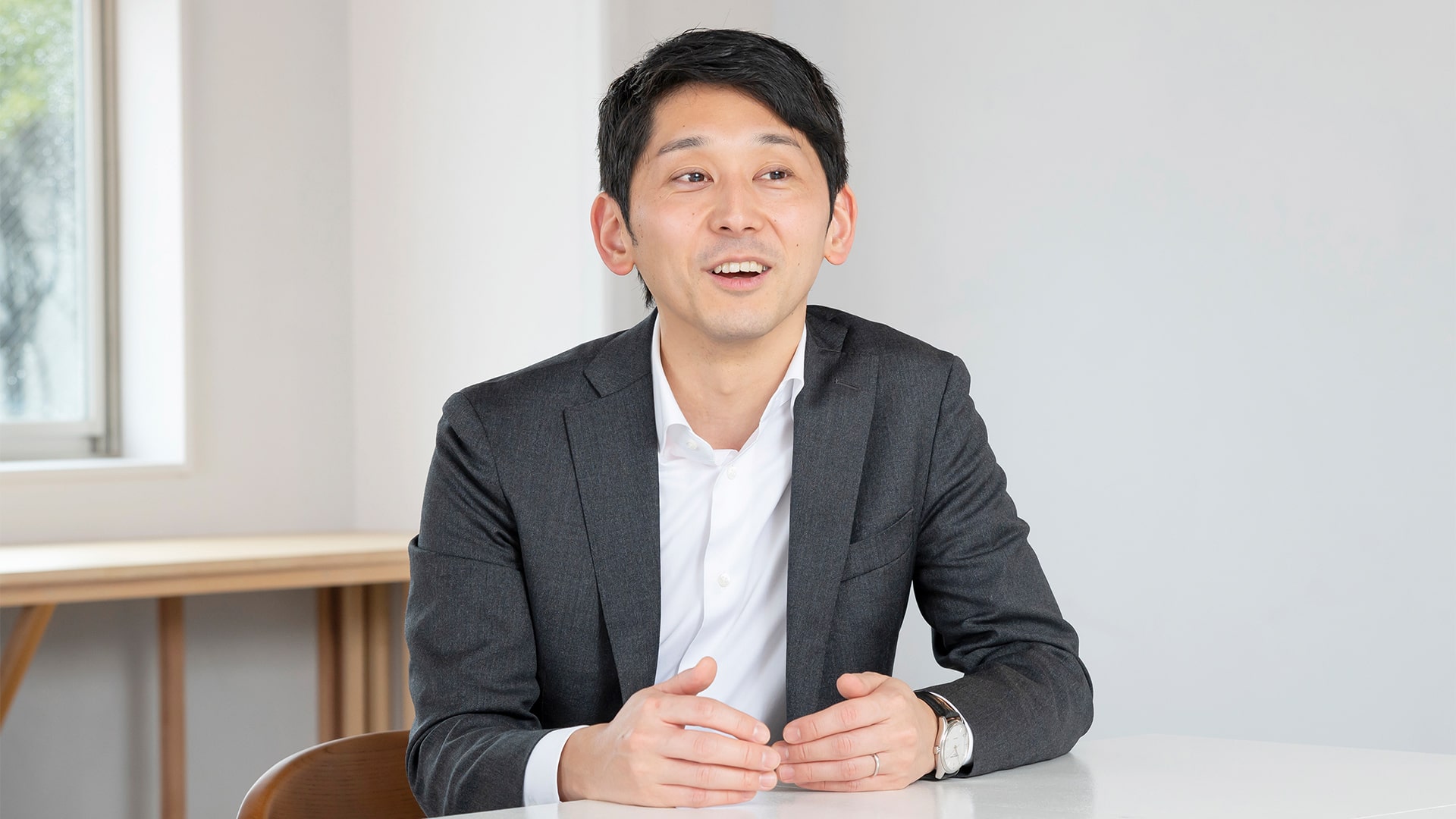
Hiroshima Post-autumn tilling and extended drainage are both concepts that were conceived to address the methane problem. As Mr. Suda explained, those emissions come from the organic matter decomposing in the flooded fields. The extended drainage is designed to lengthen the period when the water is removed, and the post-autumn tilling is designed to hasten the decomposition before the water is added.
Why Take Part in this New Initiative?
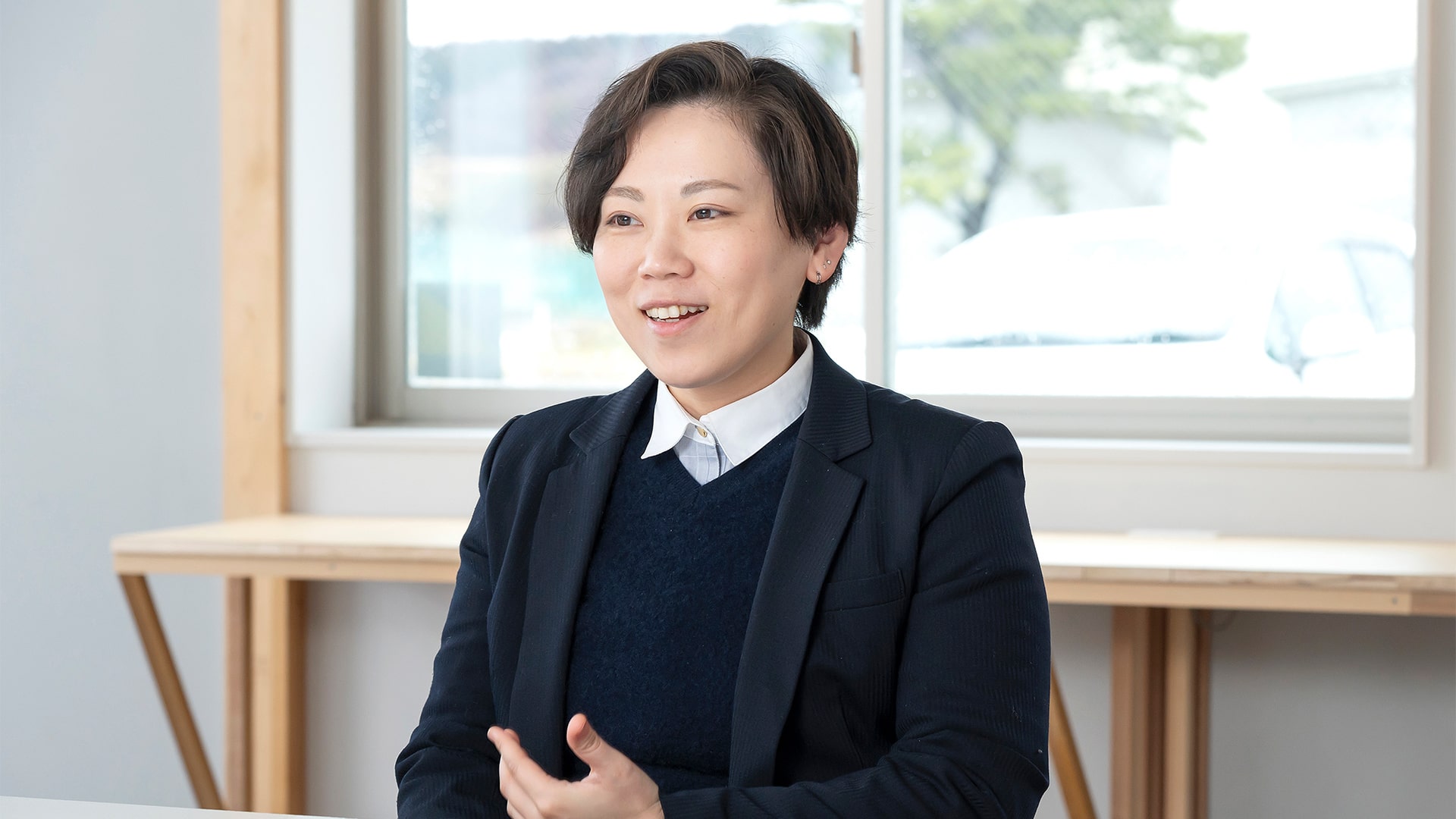
—— What led to Gonuemon taking part in this rice-paddy methane reduction project?
Yamashita Towards the end of 2022, we began visiting farmers to see if they were interested in working with MC on drainage-period extensions, but that was before the methodology for wetland rice cultivation was approved under Japan's J-Credit scheme. We weren't able to work out the precise conditions and were unsure of how effective both the credit scheme and extensions would be. Fortunately, that was when MC Group company Mitsuhashi came to the rescue. Mitsuhashi is an end-to-end producer whose operations span rice polishing to the manufacturing and sales of pre-cooked rice products. When its people learned of our predicament, they introduced us to Gonuemon. Mr. Suda has always been a very environmentally aware farmer, and when we asked him about working with us on our drainage project, he responded both immediately and enthusiastically about the idea. In fact, our discussions went so smoothly that I remember feeling worried and thinking, "Something's wrong, because it shouldn't be this easy!" (laughs) Suda I already understood the mechanisms behind methane reduction, so when Ms. Yamashita asked me about the drainage extensions, I remember thinking, "Yeah, that would probably be quite effective." As a farmer, the idea of eco-conscious agriculture gives you a good feeling, and it also sends a positive message to society about the work you're doing. In my opinion, the credit payments are really just a bonus. I was pleased to hear that someone had started such a beneficial project, so I decided to try combining the practices of post-autumn tilling and extended drainage. Yamashita After we approached Mr. Suda, we spoke with a lot of other farmers as well, but some of them were a bit reserved about the idea, telling us that because they were worried about the effect it would have on their crop yields, they'd rather observe how it went at other farms for a bit before committing to it. Others said they'd take part, but were only willing to do it on limited sections of their rice fields. Overall though, the response has been very positive, and like Mr. Suda, some farmers were very enthusiastic about it right from the get-go. Considering that this was a completely untested challenge, we were very grateful for their optimism and encouragement.
Impact on Rice Harvests and Quality in Year One
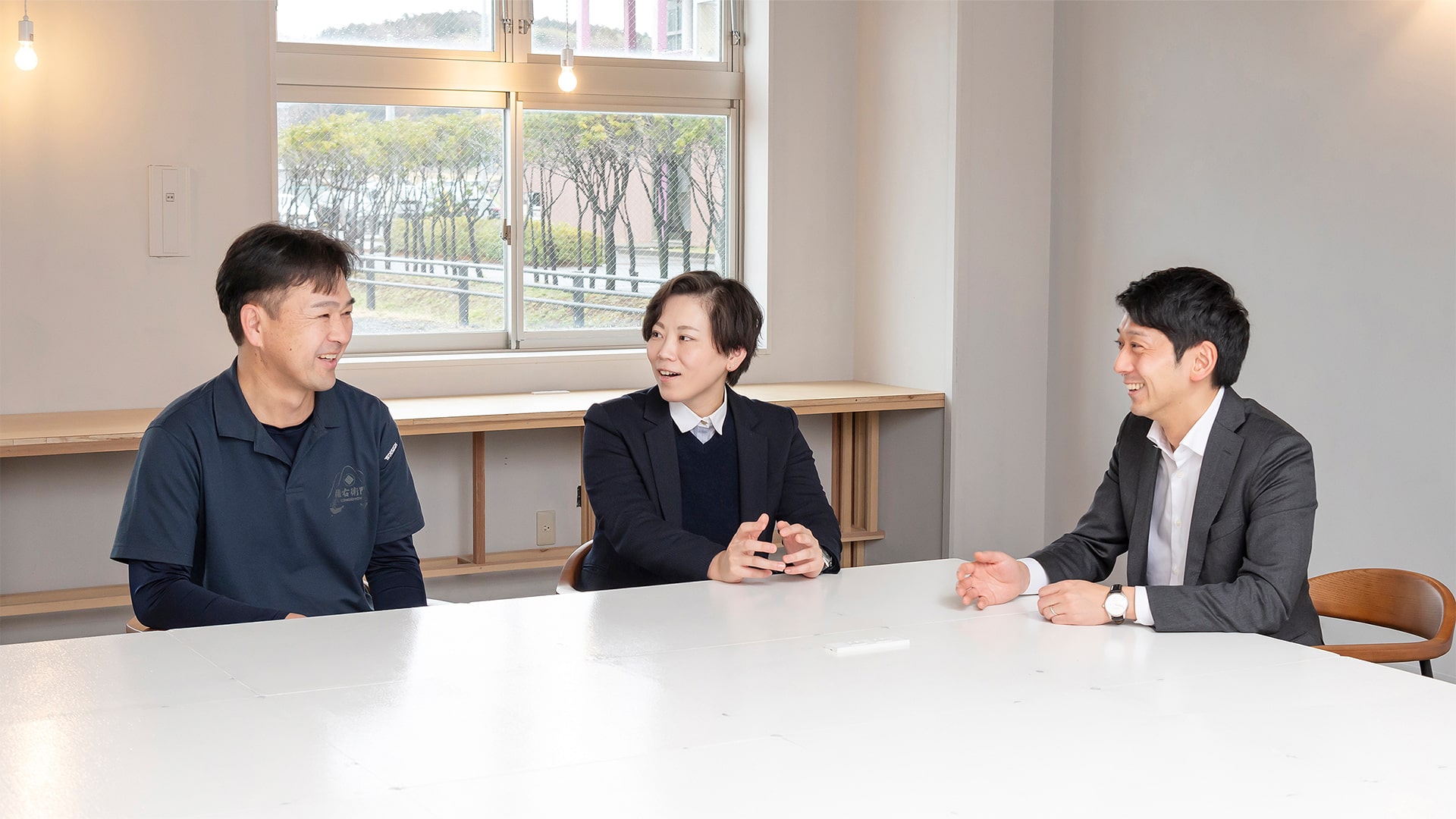
—— So have the drainage-period extensions proven effective for Gonuemon?
Suda
Right now, Gonuemon is focused on fields that previously had never been drained at all, draining them over a period of seven days. Admitedly, I was somewhat anxious about the effects this would have on the rice growth, but when we actually tried it, we experienced absolutely no declines in either yields or quality. The summer of 2023 brang record-level heat to Akita Prefecture, and even during the drainage period, it was bright and sunny every day with temperatures soaring to almost 30 degrees celcius. To be honest, the sunshine was so strong that I was almost hoping for rain. In the end though, even that had a negligible impact.
Hiroshima
According to a report by NARO, the drainage extensions have actually improved the taste of the rice slightly on average.
In fiscal year 2023, we had 30 rice farms, including Mr. Suda's, take part in our project. Despite the blistering heat, almost all of the farmers extended their drainage periods on schedule, and allowing for some data inadequacies, we expect that roughly 90% of the methane reductions achieved will be eligible for J-Credit conversion.* Furthermore, none of the other farmers said that their yields or quality had suffered, so we plan to build on this momentum and expand the work next fiscal year and thereafter.
*This interview was conducted in February 2024

—— From what I understand, this drainage-extension work has to be reported to MC. Doesn't that just further burden the farmers, who are already very busy?
Suda In Gonuemon's case, we were already using the "Agri-note" farm-management support app developed by WaterCell. It helps us to keep track of all the farming work being done in each of our fields under management. Using this app during the drainage-period extension allows us to record when we drain and add water to the paddies and take photos, all with our smartphones, so it's very easy. What we needed to do is to send the records in the app to MC, so there's really no extra burden on the farmers. Also, drainage extensions that apply to the J-Credit scheme need to be a minimum of seven days longer than the average drainage period over at least the last two years. Figuring that out might sound complicated, but because Agri-note has all the past records in its database, it simply does those comparisons for us.
Future Challenges and Outlooks for Rice-paddy Methane Reduction
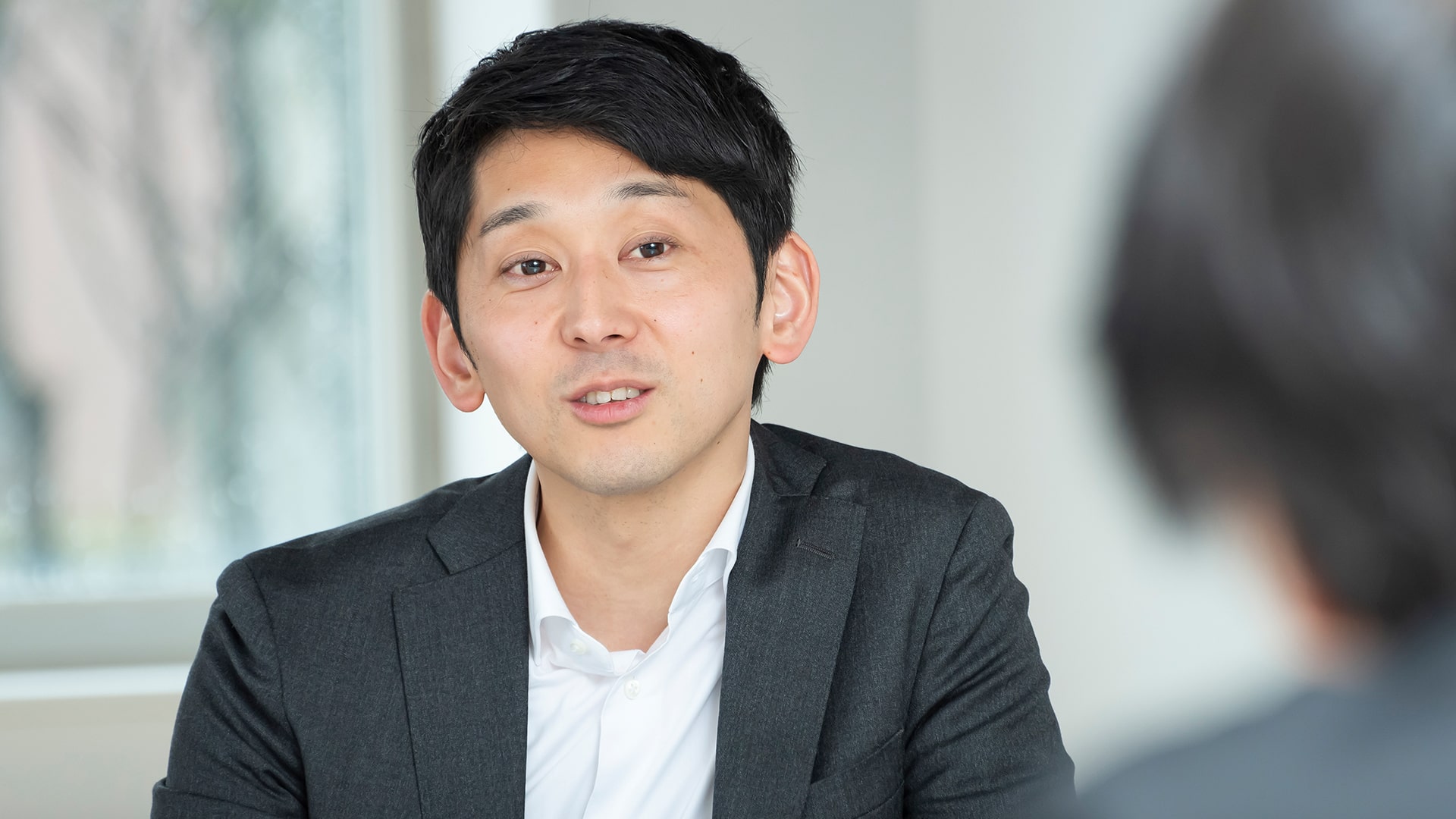
—— What will be needed to scale up this project in the future?
Yamashita I think in the end, that's the key, how to reduce the physical and mental burden on rice growers. During the project's first fiscal year, we learned a lot from the farmers, such as calculating when in the season we ought to approach them, what information and materials are needed at their farms, and so on. I think we can use what we've learned to start offering them even better services next fiscal year. Hiroshima Making things easier for farmers is a huge challenge in Japan. With this having been the first fiscal year for our project, the first thing we needed to do was confirm the situation at the farms, so we asked the farmers to provide us with that information, using any means necessary. Mr. Suda and others did so through the Agri-note app, but we also received information in a variety of other formats, including handwritten notes, Excel files and so on. So that was helpful, but if we want to expand this project further, we'll have to be more efficient and reduce the workloads for both the farmers and the secretariat. In that respect, I think digital tools like Agri-note will be effective. As long as we can incorporate cultivation-related data recorded by those tools into the application procedure, I think we can make things even easier for farmers. Another important thing is providing support to farmers who aren't used to using digital technologies. Our aim is to partner up with sales agents who deal with farmers on a daily basis to establish a thorough support system.
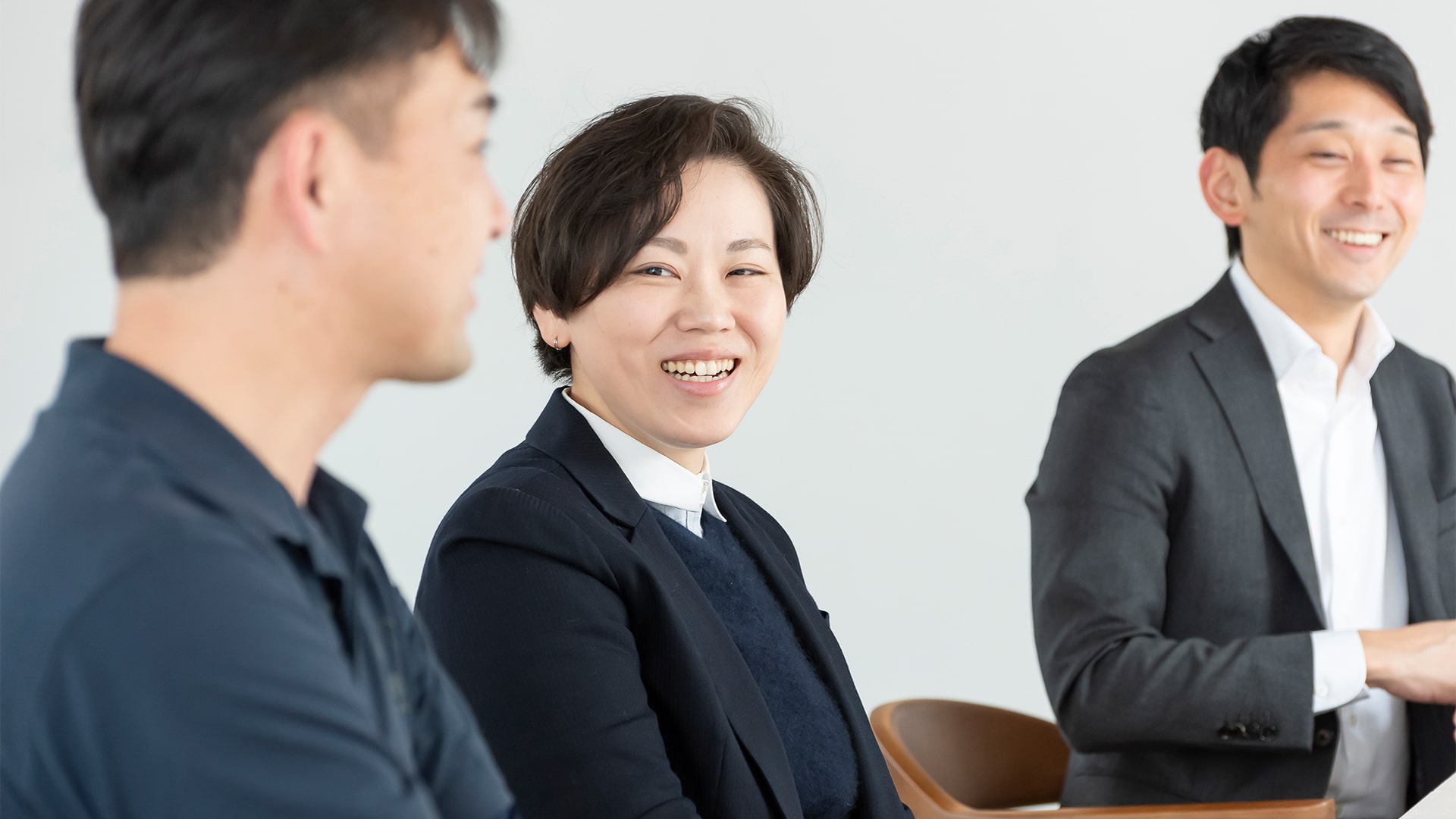
—— During our last discussion, you alluded to adding value to the rice by marketing it as having been grown using methane-reduction methods. Tell me a little about that.
Yamashita The questions we're asking now, are how do we value this extra work being done by the farmers, and how do we get players throughout the rice value chain to take part? Well, one approach is to brand the rice as a product of "low-methane rice paddies." Creating the mechanisms to do that is something that those of us at MC need to concentrate on, and right now it's a daily process of trial and error. Provided that we can develop a good model, I think even more rice growers will start showing an interest in prolonging their drainage periods. Hiroshima When chatting with Mr. Suda, I realized there's a lot of hidden potential here for brewers' rice. If brewers of Japanese spirits market their products as having been made with low-GHG rice, that will no doubt add value, and I think it would receive a lot of support internationally as well. Suda If we hope to add value by branding the rice as being "eco-harvested in Nikaho," it's essential that we get more members of the farming community who share our aspirations on board with this project. There's only so much that Gonuemon's farms can produce on their own. Having tried extending our drainage period in 2023, I've learned quite a bit, so right now I'm doing my best to convince younger rice farmers of the benefits of this and entice them to work with us. If we can get more like-minded farmers to sign up to this, it will strengthen the region and give its agriculture a new lease on life. In the future, I hope we can get schools in Nikaho City to prioritize the use of methane-reduction rice in their school meals.
—— Do you think the credit-price agreements are likely to incentivize more farmers to get involved?
Yamashita The J-Credit system itself is still a work in progress, but we're getting the sense that the market has growth potential. Green initiatives are always more cost intensive, so the idea of paying a set price has been positively received by most of the farmers we've talked to. Suda I agree, but if we only stress that the returns for these credits are a new source of farmer income, I don't think this business will last very long. I get the feeling that more people are concerned about distinguishing and adding value to the rice by marketing its impact on methane-reduction, and how that might rejuvenate the region.
Protecting a Region and its Scenic Beauty Through Farming
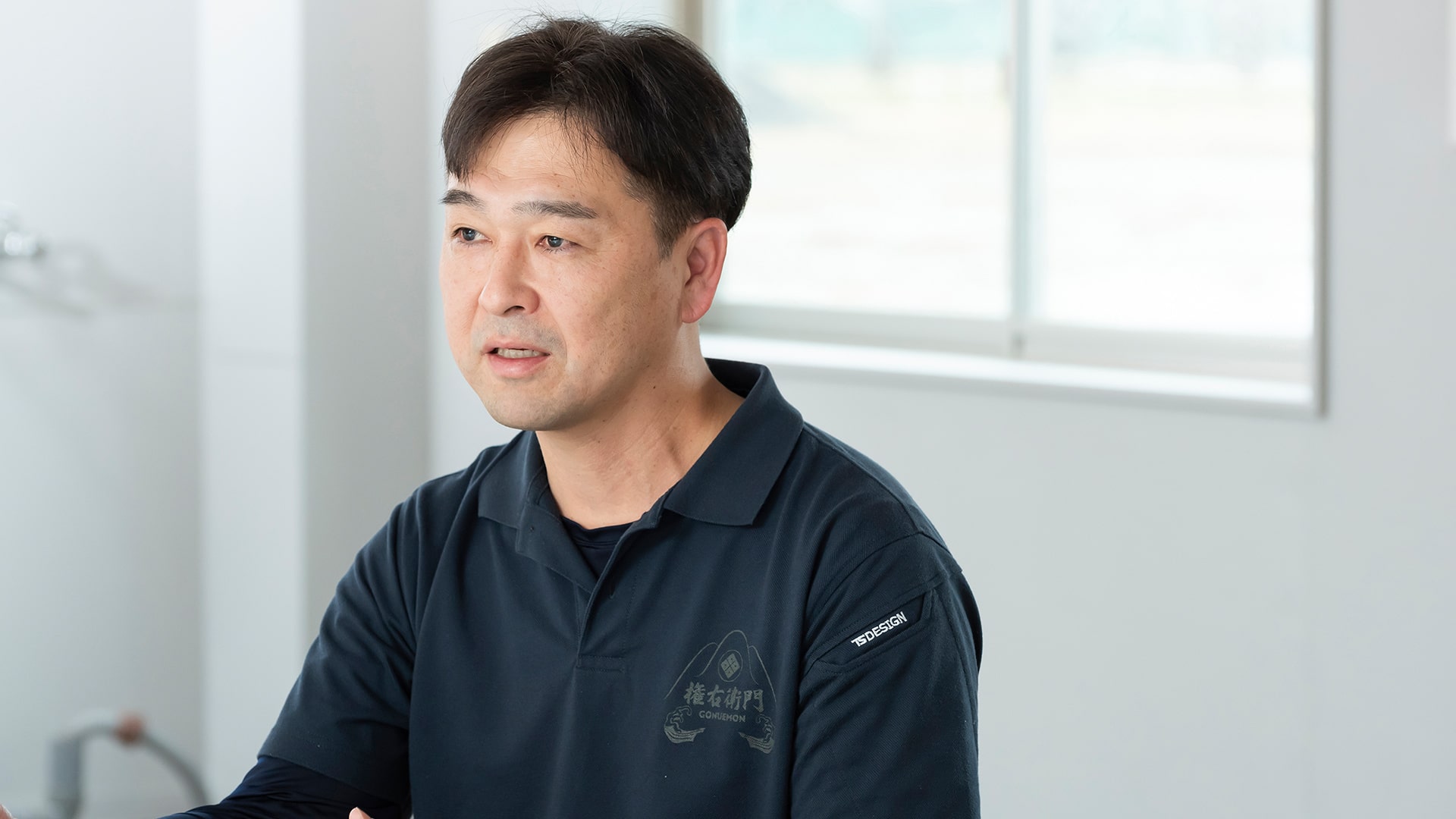
—— Mr. Suda, I get from what you're saying that you're determined to protect the Nikaho region.
Suda Nikaho City is home to many manufacturers and research institutes, and it's actually known as Akita Prefecture's leading manufacturing town. Speaking as a farmer though, I'd love to help invigorate its agricultural industry and raise its presence as a farming town. Considering how the municipal authorities are promoting the city's efforts to prevent global warming, I think its farmers need to also do our part in living up to that claim. If Nikaho's farmers can get involved in creating J-Credits by reducing rice-paddy methane emissions, companies in the city can buy those credits. Furthermore, Nikaho's eco-friendly rice can be sold all over the country. That's the future I want to help create.
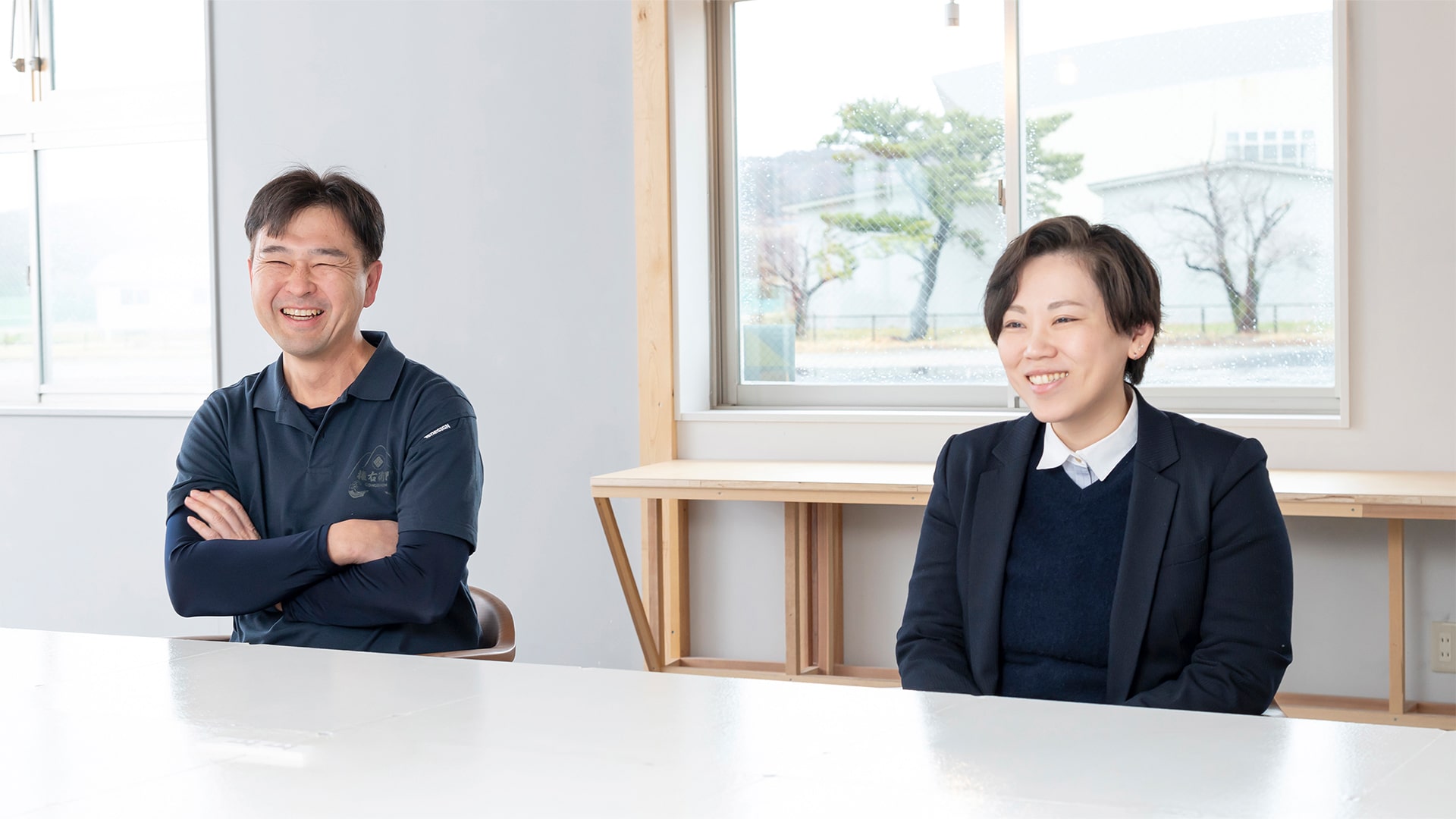
—— And speaking of future, let me conclude our discussion by asking each of you how enthusiastic you are about the one awaiting this project.
Suda I left Nikaho once in the past, but now I've decided to farm there for the rest of my life. Gonuemon is taking over farmlands from people who are leaving the industry, and it now manages 512 fields from one end of the city to the other. Farming is not all fun. There's a lot of hard work and challenges to overcome, but I'm confident that if we remain dedicated to the profession, more people with an interest in farming will come onto the scene. Gonuemon's lands will serve as training grounds where newcomers can gain experience, and when they grow into independent farmers, we'll cede some of our lands over to them. Provided that we can foster that kind of healthy cycle, we'll be able to protect Nikaho's farms and raise its next generation of farmers as well. Through farming, we can protect the scenic beauty of Akita Prefecture, as captured by Mount Chokai, the Japan Sea, and other picturesque places, which I believe goes hand in hand with protecting both our country's environment and our planet's. Yamashita I'm so grateful that this project has connected me with others who share the same sense of mission and beliefs. I think MC is uniquely equipped to meet the expectations of Mr. Suda and all the other participating farmers, so I will do my best to ensure that we keep finding and offering them value. Hiroshima Hearing Mr. Suda speak of his grand vision and ambitions has steeled me for the challenges ahead. Cutting methane and other GHG emissions is a problem that all people must contend with, so we can look at this drainage-period extension project as the farming industry's way of addressing it. Looking forward, I'd like to raise awareness of this project among all farmers who are keen to decarbonize, and to help MC make it succeed.
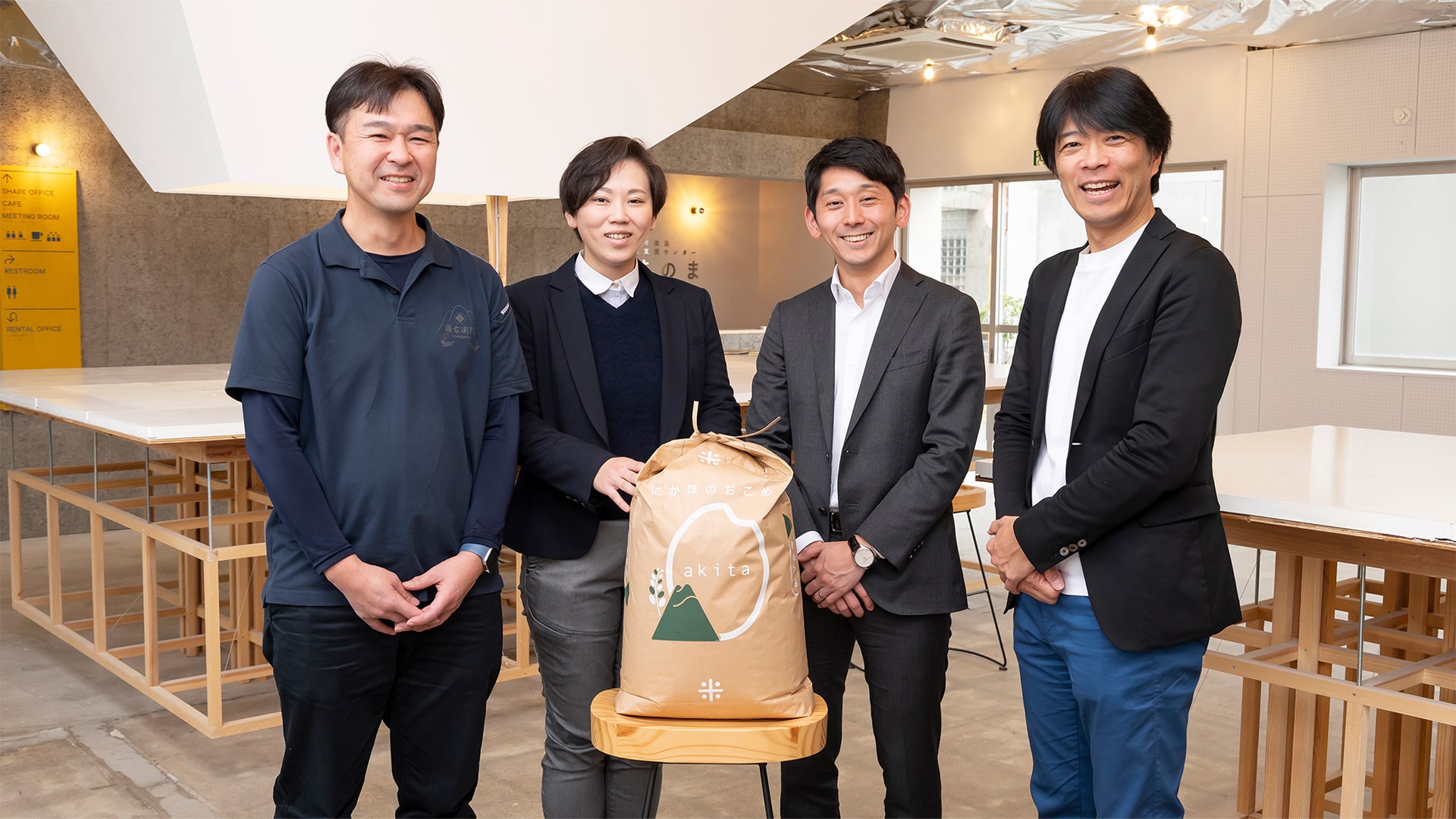
-
Teaming with Farmers to Decarbonize vol.1
Improving Grazing Practices Regenerating Native Forests in Australia -
Teaming with Farmers to Decarbonize vol.2
Lowering Methane Emissions from Rice Production
Supporting Farmers and Decarbonization -
Teaming with Farmers to Decarbonize vol.3
Rice-paddy Methane Reduction Project Goes into Full Swing
More Growth Anticipated in Regionally Supportive, Eco-conscious Agriculture
